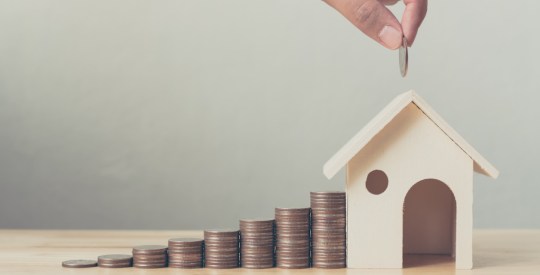Existing home sales rose for the second consecutive month, as January saw a seasonally-adjusted annual rate of 6.69 million purchases – up a robust 23.7% year-over-year. You can thank Millennials for that.
Lawrence Yun, chief economist for the National Association of Realtors, said last month that he expected momentum to carry over from the end of 2020. He was right, as January’s numbers were up 0.6% from December.
A total of 5.64 million homes were sold in 2020, up 5.6% from 2019 and the most since before the Great Recession.
“Sales easily could have been even 20% higher if there had been more inventory and more choices,” Yun said. “Home sales continue to ascend in the first month of the year, as buyers quickly snatched up virtually every new listing coming on the market.”
The housing industry was a bright spot throughout 2020 and has remained so in the early part of 2021 as the nation continues to battle the COVID-19 pandemic and economic fallout. Yun said the continued vaccine rollout and financial stimulus from President Joseph Biden’s American Rescue Plan will only aid in more home sales – which will in turn prop up the economy even more.
How this real estate brokerage’s unique model generates more profit for agents
Today, both sellers and buyers expect to handle a majority of the process online. For a well-prepared real estate brokerage, this holds a promising future.
Presented by: 1 Percent Lists
Charlie Oppler, NAR president, said the company is “prepared and eager” to help families and neighbors secure housing in 2021. Distressed sales – foreclosures and short sales – represented less than 1% of sales in January, equal to December’s percentage but down from 2% in January 2020.
“NAR is working to close the racial homeownership gap, secure equal access to housing for all Americans and address housing affordability issues plaguing communities across the country,” Oppler said.
Yun predicts existing-home sales will reach at least 6.5 million in 2021 – even with mortgage rates likely to inch higher due to the rising budget deficit and higher inflation.
“The housing outlook looks solid for this year,” Yun said.
Total housing inventory at the end of January was 1.04 million units, down 1.9% from December and down 25.7% from one year ago. Unsold inventory sits at a 1.9-month supply at the current sales pace, equal to December’s supply and down from the 3.1-month amount recorded in January 2020. Properties typically remained on the market for 21 days in January, seasonally even with December 2020 and down from 43 days in January 2020. Over 70% of the homes sold in January 2021 were on the market for less than a month.
Low inventory remains an enormous problem for the industry, especially with mortgage rates hanging below 3%. But experts agree better days are ahead, with more homeowners expected to move during the warmer months.
“The constraining factor is supply, though that should ease this spring,” said Robert Frick, corporate economist at Navy Federal Credit Union. “Rising prices remain a big barrier to homeownership for many, with the median price up a record 14.1 percent from a year ago. While home building is accelerating, we can expect demand exceeding supply at least until next year.”
Younger-aged homebuyers are expected to continue to pack the market this year, especially with the possible passage of Biden’s $15,000 tax credit for first-time homebuyers.
“We expect a significant portion of purchase demand in the coming years to be driven by millennials and the younger-age cohorts,” said Joel Kan, Mortgage Bankers Association associate vice president of economic and industry forecasting. “Despite scarce inventory levels in the entry-level portion of the market, first-time buyers represented a third of sales last month.”
First-time homebuyers were responsible for 33% of home sales in January, up from 31% in December 2020 and from 32% in January 2020.
Single-family home sales rose at a seasonally-adjusted annual rate of 5.93 million in January, up 0.2% from 5.92 million in December, and up 23.0% from one year ago. The median existing single-family home price was $308,300 in January, up 14.8% from January 2020.
Existing condominium and co-op sales were recorded at a seasonally-adjusted annual rate of 760,000 units in January, up 4.1% from December and up 28.8% from one year ago. The median existing condo price was $269,600 in January, an increase of 8.6% from a year ago.
“While it continues to mostly be a sellers’ market, the rapid increase in prices and the prospect of more building in the spring gives sellers who might be thinking about changing homes a strong incentive to act now, which might restore some balance to the market,” said John Pataky, executive vice president at TIAA Bank.
Regionally, existing home sales in the Northeast fell 2.2%, rose 1.9% in the Midwest and 3.2% in the South, and fell 4.4% in the West. Unsurprisingly, the median prices of homes in all regions was up from January 2020 – 15.8% in the Northeast, 14.7% in the Midwest, 14.6% in the South, and 16.1% in the South.



